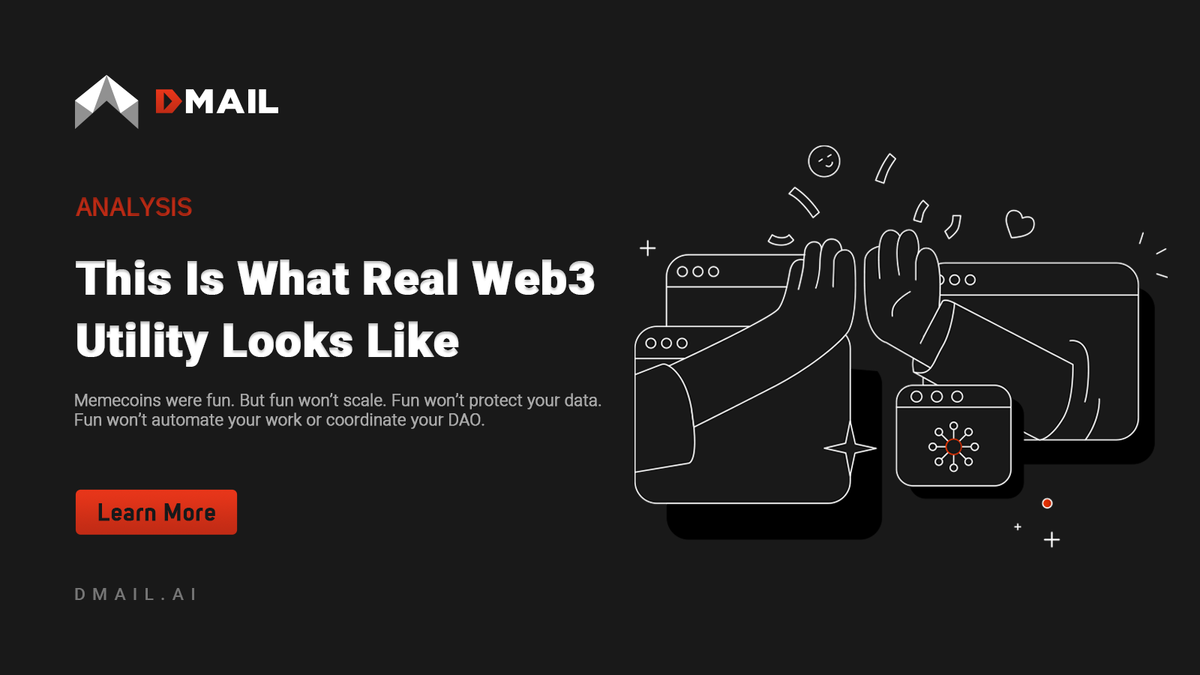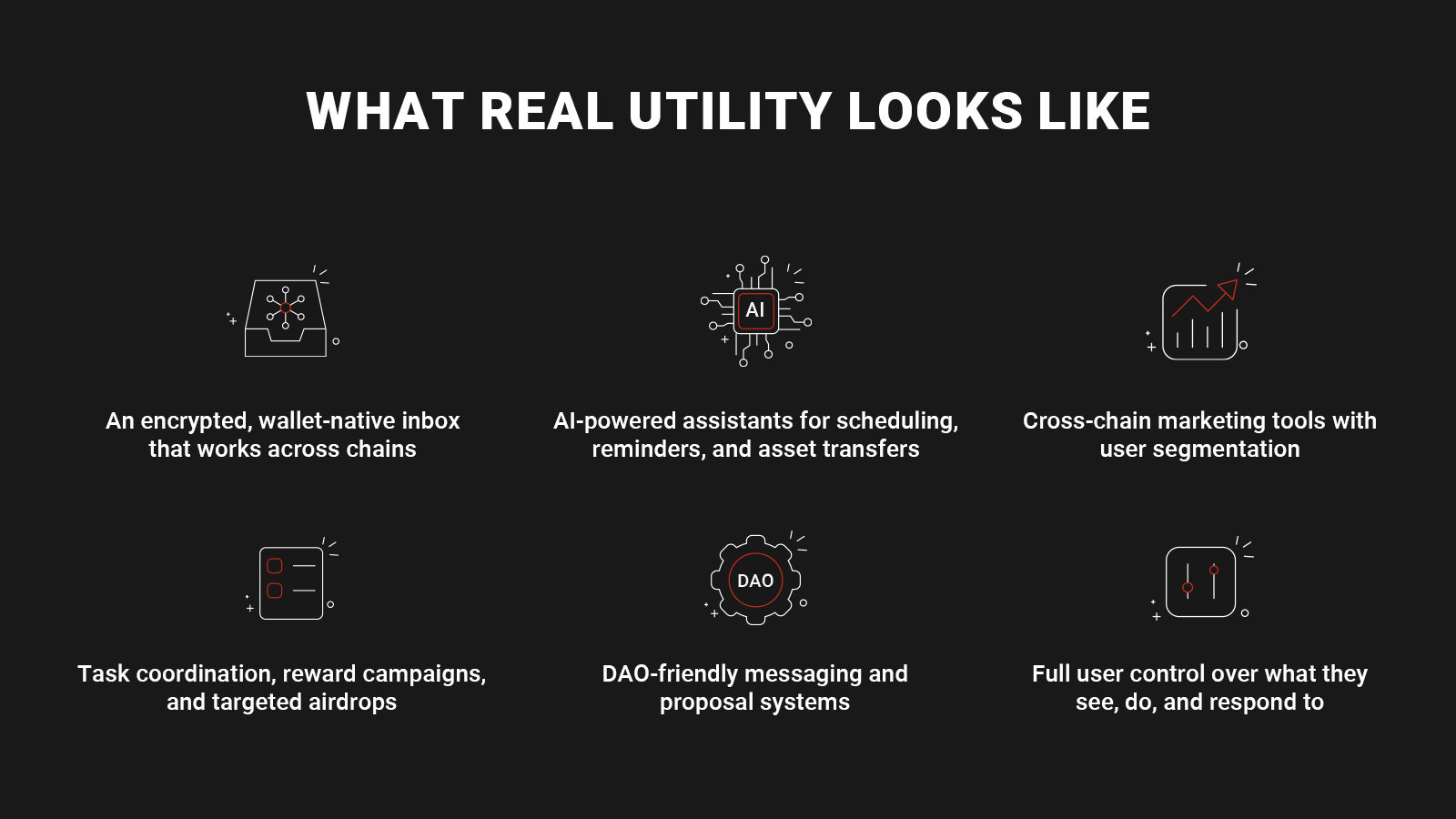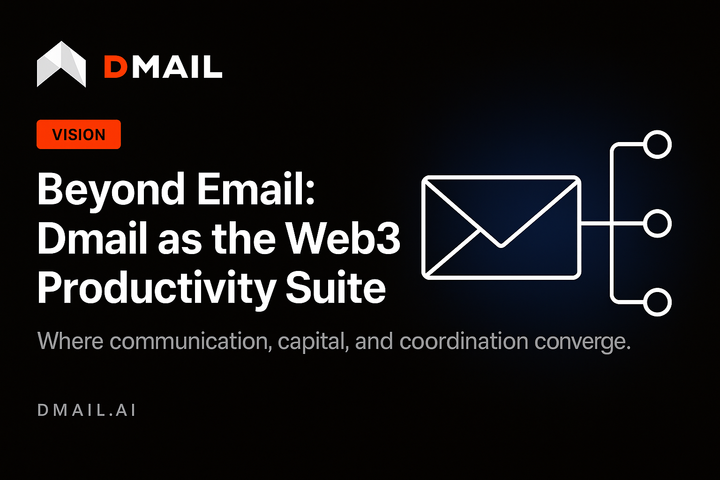Forget Memecoins: This Is What Real Web3 Utility Looks Like
Memecoins were fun. But fun won’t scale. Fun won’t protect your data. Fun won’t automate your work or coordinate your DAO. The market is waking up to that. The real winners of this cycle won’t be the loudest—they’ll be the most useful.

Speculation Won’t Scale — Utility Will
Web3 has had its fair share of distractions. Memecoins surge, crash, and resurge—often driven by nothing more than a trending hashtag or an influencer’s tweet. Billions flow into tokens with no roadmap, no product, and no plan. But behind the noise, the market is shifting. The next cycle won’t be about which animal is on your coin—it’ll be about what actually works. What solves a problem. What brings in real users. What lasts.
Enter Dmail: Built for Function, Not FOMO
While traders flip JPEGs and chase meme pumps, Dmail has quietly built one of the most important infrastructures in the decentralized economy: communication. With over 48 million registered users across 37 blockchains, Dmail isn’t promising utility someday—it’s delivering it now. It’s not a vibe. It’s a protocol. One that enables messaging, task automation, notifications, marketing, governance, and AI-driven workflows. All wallet-based. All encrypted. All composable.

What Real Utility Looks Like
Web3 doesn’t need more hype. It needs infrastructure that works. Dmail provides:
- An encrypted, wallet-native inbox that works across chains
- AI-powered assistants for scheduling, reminders, and asset transfers
- Cross-chain marketing tools with user segmentation
- Task coordination, reward campaigns, and targeted airdrops
- DAO-friendly messaging and proposal systems
- Full user control over what they see, do, and respond to
This isn’t “Web3 email.” That’s too small. This is the programmable communications layer for the decentralized internet.
Why Memecoins Can’t Compete
Memecoins are speculative by design. They rely on attention, virality, and collective delusion. But they offer nothing sticky—no reason for users to stay once the music stops. They don’t solve friction. They don’t improve UX. They don’t onboard the next 100 million users. Dmail does all three. Its UI feels familiar, onboarding is frictionless, and the value is immediate—users receive real messages, tasks, alerts, and incentives the moment they connect. It’s functional, not fantastical.
Web3 Is Growing Up—So Must the Narrative
As rate cuts resume, capital returns, and the liquidity tide rises again, the market will reward substance. Projects that generate real value—measurable in usage, retention, and integrations—will attract the next wave of users, partners, and capital. The era of ponzinomics is fading. The era of platforms that actually work is arriving. In this new era, Dmail is not a sideshow. It’s foundational.
Utility Has Momentum. Dmail Has Proof.
Most crypto platforms talk about onboarding. Dmail does it. With 2 million monthly active users and rising, it’s already one of the most used dApps in the world. That didn’t happen through gimmicks. It happened by delivering something people actually needed: communication that works across chains, wallets, and platforms. It’s not abstract. It’s adoption.
Conclusion: The Shift Is Inevitable
Memecoins were fun. But fun won’t scale. Fun won’t protect your data. Fun won’t automate your work or coordinate your DAO. The market is waking up to that. The real winners of this cycle won’t be the loudest—they’ll be the most useful.
Dmail is what happens when you stop building for speculation and start building for scale. It’s what Web3 needed from the beginning: a communication layer that is decentralized, intelligent, and user-owned.
Forget memecoins. This is what real Web3 utility looks like.

Connect with Dmail: Website | Twitter | Discord | Github | Telegram





Comments ()